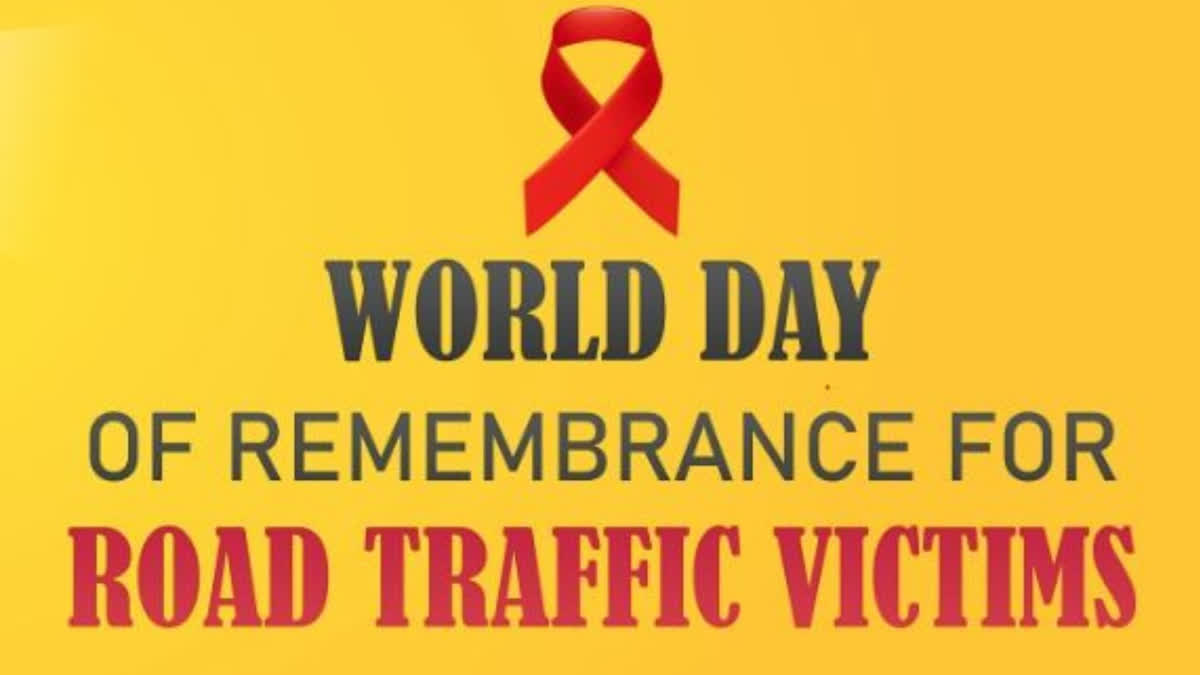Every year, the third Sunday of November is observed as the World Day of Remembrance for Road Traffic Victims. This year's date is November 17. It aims to remind governments and individual members of society of their responsibility to make roads safer. It is a high-profile global event to remember the many millions who have been killed and seriously injured in road accidents.
Origin of the Day
The World Day of Remembrance for Road Traffic Victims began in 1993 by Road Peace. The United Nations adopted it in 2005 to be marked every third Sunday in November as a tribute to those affected by road traffic incidents globally. WHO and UN Road Safety Collaboration urge support for victims and families.
Key facts about traffic accident (WHO Report)
- Approximately 1.19 million people die each year as a result of road traffic crashes.
- Road traffic injuries are the leading cause of death for children and young adults aged 5–29 years.
- 92%t of the world's fatalities on the roads occur in low- and middle-income countries, even though these countries have around 60% of the world's vehicles.
- More than half of all road traffic deaths are among vulnerable road users, including pedestrians, cyclists and motorcyclists.
- Road traffic crashes cost most countries 3% of their gross domestic product.
- The United Nations General Assembly has set an ambitious target of halving the global number of deaths and injuries from road traffic crashes by 2030 (A/RES/74/299).
The theme of World Day of Remembrance for Road Traffic Victims 2024 is ‘That Day’
"That day” theme tells the stories of that day when traffic collisions stopped or changed the course of the victim’s lives forever. Each victim has her/his own story of that day, which their relatives, friends and acquaintances carry in their memory. The emotional charge of that day is so strong that it remains in our memory forever.
Some of the major factors contribute to traffic accidents
Driver Error
Driver error contributes to 94 per cent of traffic accidents, according to a National Highway Traffic Safety Administration NHTSA (National Highway Traffic Safety Administration) report.
Impaired Driving
Driving under the influence of alcohol remains a major factor in causing traffic accidents. Around 29 people die each day in automobile accidents that involve a drunk driver.
Distracted Driving
Distracted driving remains a major factor in traffic accidents, drivers who shift their focus from the road and instead pay attention to any other activity. It places motorists, pedestrians, and bicyclists at risk for a traffic accident. Drivers become distracted when they text, talk on the phone, groom themselves, or eat or drink.
Speeding
The higher the speed, the greater the risk. At high speed, the vehicle needs a greater distance to stop i.e. braking distance. A slower vehicle comes to a halt immediately while a faster one takes a long way to stop and also skids a long distance due to the law of notion.
Road accidents in India (Ministry of Road Transport and Highways Report)
A total number of 4,61,312 road accidents have been reported by States and Union Territories (UTs) during the year 2022, claiming 1,68,491 lives and causing injuries to 4,43,366 persons. The number of road accidents in 2022 increased by 11.9 per cent compared to the previous year 2021. Similarly, the number of deaths and injuries on account of road accidents also increased by 9.4 per cent and 15.3 per cent respectively. These figures translate, on average, into 1,264 accidents and 462 deaths every day or 53 accidents and 19 deaths every hour in the country.
India Status Report on Road Safety 2024
- Most Indian States are unlikely to meet the United Nations Decade of Action for Road Safety goal to halve traffic deaths by 2030.
- In 2021, road injuries were the 13th leading cause of death and the 12th leading cause of health loss, as measured by Disability-Adjusted Life Years (DALYs).
- In terms of inter-state disparity, the per capita death rates differ more than threefold between States.
- In 2021, Tamil Nadu (21.9), Telangana (19.2), and Chhattisgarh (17.6) had the highest rates per 100,000 people, while West Bengal and Bihar recorded the lowest at 5.9 per 100,000.
- Six states – Uttar Pradesh, Maharashtra, Madhya Pradesh, Karnataka, Rajasthan, and Tamil Nadu – account for nearly half of all traffic fatalities in India.
- The report also reveals that pedestrians, cyclists, and motorised two-wheeler riders are the most common victims of road accidents, while trucks are responsible for the highest proportion of impacting vehicles.
- Only eight states have audited more than half of their National Highway lengths, and very few States have done the same for their State Highways.
Government Measures for Road Safety
- Motor Vehicle (Amendment) Act 2019: Strengthened traffic regulations, increased penalties for violations, and introduced provisions for road safety, including fines for not wearing helmets and seat belts.
- National Road Safety Policy, 2010: Based on the recommendations of the Sunder Committee, the Union Cabinet approved the National Road Safety Policy in March 2010. It focuses on road infrastructure, enforcement of safety laws, public awareness campaigns, and emergency medical care for accident victims.
- Electronic Detailed Accident Report (e-DAR) portal: The project has established a central repository for reporting, management, and analysis of road accident data across the country. It helps accelerate accident compensation claims, bringing relief to victims’ families.
- Good Samaritan Law: Protects bystanders who help accident victims from legal and procedural hassles, encouraging quicker assistance to victims.
- Vehicle Safety Standards: Introduction of safety features like airbags, ABS, and crash-test norms (Bharat New Car Assessment Program) for vehicles to improve safety on the roads.
The Government of India aims to reduce road fatalities & injuries by 50% by the year 2030, as per its commitment under the Stockholm Declaration. To this end, the Ministry of Road Transport and Highways has adopted a multi-pronged approach to 4E’s, namely, Education, Engineering (both of roads and vehicles), Enforcement and Emergency Care.



